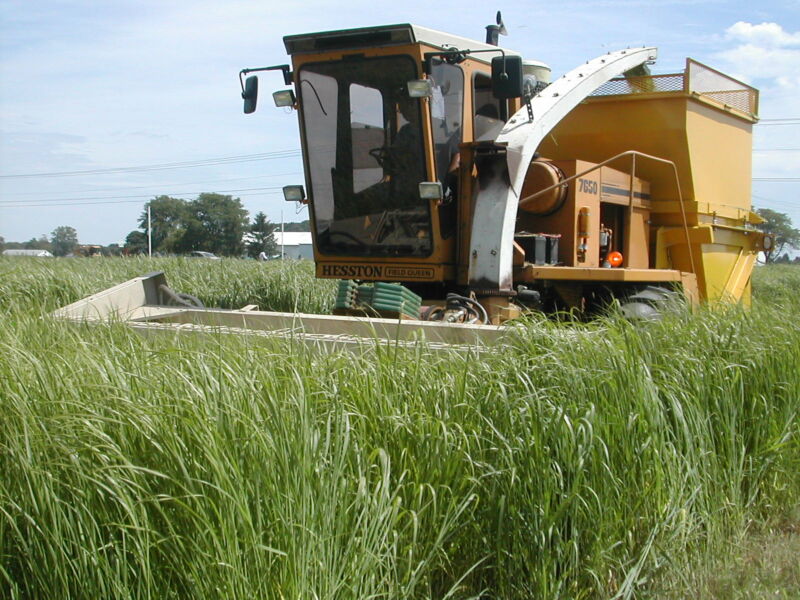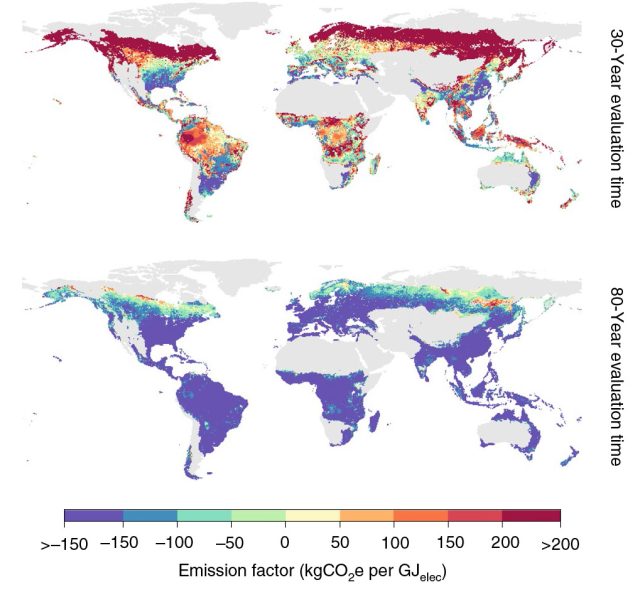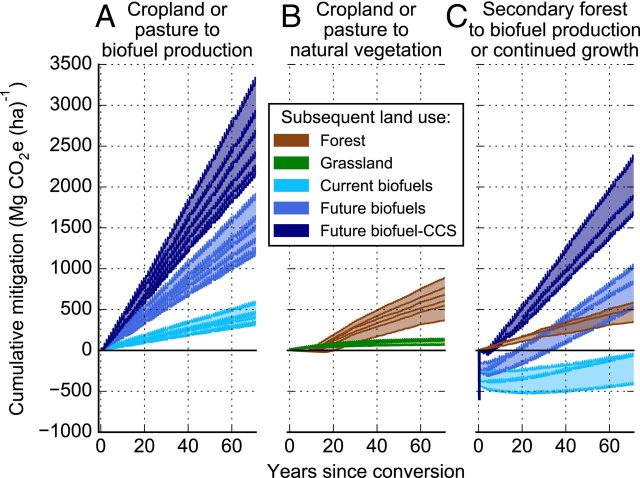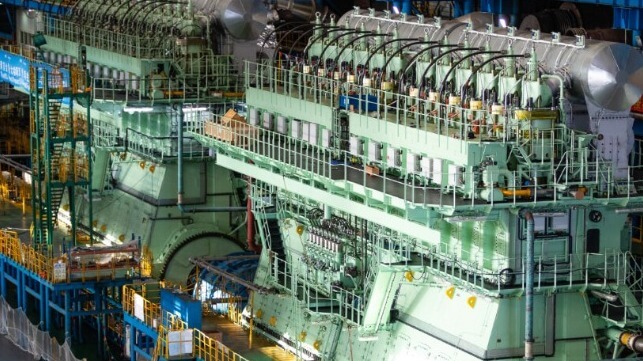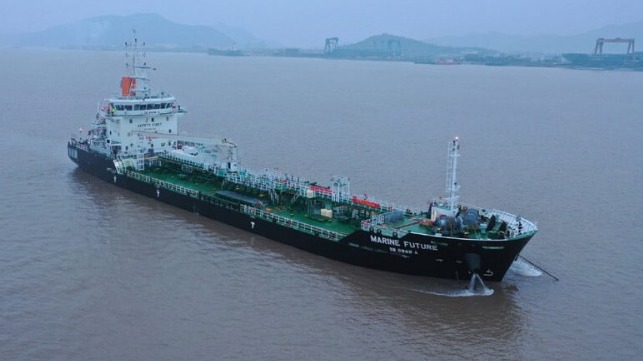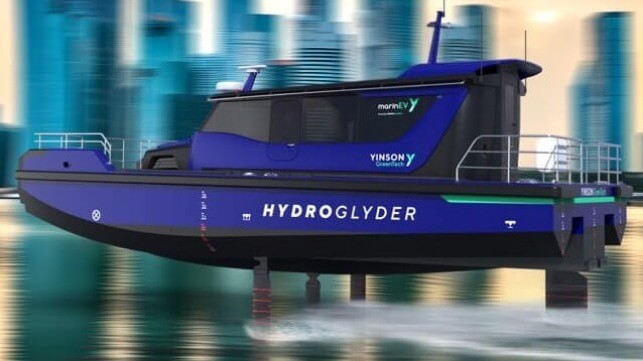Food vs fuel: Ukraine war increases scrutiny on use of crops for energy

Soaring food prices caused by the war in Ukraine have increased the risk of famine, raising pressure on producers of low-carbon fuels derived from crops and sparking a “food versus biofuel” debate.
Before Russia’s invasion, global biofuel production was at a record high. In the US, the leading biofuels producer, 36 per cent of total corn production went into biofuels last year, while biodiesel accounted for 40 per cent of soyabean oil supplies.
But some food companies and policymakers are calling for an easing of mandates for blending biofuels into petrol and diesel to increase global grain and vegetable oil supplies.
“Now is not the time [for governments] to be encouraging the conversion of food crops to energy through artificial policy incentives or mandatory blending targets,” said the Washington-based International Food Policy Research Institute.
Between them, Russia and Ukraine produce nearly a fifth of the world’s corn and more than half its sunflower oil, but crop exports from the countries are at a fraction of prewar levels. Hundreds of millions of people are at risk of “hunger and destitution” because of food shortages caused by the war, the UN’s secretary-general warned last week.
The total amount of crops used annually for biofuels is equal to the calorie consumption of 1.9bn people, according to data firm Gro Intelligence, highlighting the volume of agricultural commodities that could be diverted from energy use if the food security crisis worsened.
Do biofuels cause problems in food markets?
Biofuels — ethanol made from corn and sugarcane and biodiesel made from vegetable oils including soyabean oil and palm oil — have been blended into motor fuel since the early 2000s to boost energy supplies and reduce the environmental impact of fossil fuels.
Biofuels were blamed in part for the last food crisis in 2007-08. Studies, including from the World Bank and IMF, suggested that the growth of biofuels contributed 20-50 per cent to the price increase of corn during the crisis. Their rising use was described as “a crime against humanity” by the UN’s then-food rights rapporteur.
But biofuel producers argue they have played a minimal role this time around. “Biofuels didn’t cause this crisis — either the price or the contraction in supply,” said James Cogan of Ethanol Europe, an industry lobby group.
High prices are not about demand but reflect “erratic trading conditions and high energy prices”, he added. Reducing biofuel production “wouldn’t materially ease the price crisis”.
Would limits on biofuels reduce world hunger?
A 50 per cent reduction in the grain used for biofuels in Europe and the US would compensate for all the lost exports of Ukrainian wheat, corn, barley and rye, according to the World Resources Institute, a Washington think-tank.
Although crop production has risen along with biofuel output, meaning the amount available for food supplies has not decreased, biofuel usage cannot rise exponentially without damage to the environment, campaigners said.
“In a world that is food insecure, we need to be thinking really critically about these limited resources as we try to feed the world and solve the climate crisis,” said Oliver James, a researcher at Princeton University who helped compile the WRI data.

Maik Marahrens, of Brussels-based environmental campaign group Transport & Environment, said that in the EU, about 10,000 tonnes of wheat, equal to 15mn loaves of bread, are burnt daily as ethanol in cars.
The ethanol industry says such comparisons are unfair. Most of the grain used to produce fuel is feed wheat, which goes into animal food, rather than milling wheat, which is made into bread, the industry has argued.
Biofuel sector executives said the amount of wheat used for biofuels was negligible — about 2 per cent of the total crop, according to industry association UFOP.
“In that context, it’s a bit surreal to be elevating wheat ethanol even to a topic of conversation in the current crisis about bread,” said Eric Sievers, director of investments at ClonBio, which owns Europe’s largest grain biorefinery, located in Hungary, as well as at Ethanol Europe.

Would it be more harmful to limit biofuels?
Industry executives argue that biofuels create efficiencies that nourish animals and, indirectly, humans.
The industry is a significant producer of animal feed since the process of turning grains into ethanol creates protein and fat by-products that are fed to chickens, cows and pigs.
Citing the impact on the EU alone, Cogan said limits on biofuel production “would result in lost renewable energy, lost energy independence, lost jobs, lost farm income security, increased fossil fuel imports, increased carbon emissions and increased soy meal imports [for animal feed] from the Americas”.
Are biofuel policies changing?
In the EU, Belgium and Germany are considering easing biofuel blending mandates to address food security.
The International Energy Agency cut its biofuels growth forecast for this year by 20 per cent, forecasting global demand to increase 5 per cent from 2021 to 8.5bn litres.

In the US, where cheaper corn-based ethanol is the main biofuel, Washington has tried to tamp down rising gasoline prices by allowing the higher blending level, normally cut during the summer months because of polluting concerns, to temporarily continue.
But government incentives for biodiesel and the decline in global exports from Ukraine have added to competition for soyabean oil, squeezing supplies for US food groups.
“[Soyabean oil suppliers] can’t give me a [price] quote because they can’t take my business. There’s not enough oil to go around,” said Ed Cinco, purchasing director at Schwebel’s, a bakery in Ohio.
While China has warned ethanol producers that it will “strictly control processing of fuel ethanol from corn”, India is pushing ahead with targets to raise blending quotas. Prices for sugar, the country’s main bioethanol feedstock, have increased less than other crops.
Although co-ordinated action on food security has moved swiftly up the agenda, there has been little debate on limits to biofuels at an international level.
Instead, countries using biofuels must balance food security and sustainability with energy costs and independence, said Nicolas Denis, a partner at McKinsey. Governments need to decide “what sustainable use of land looks like, given the different priorities”, he added.
SEE LA REVUE GAUCHE - Left Comment: Search results for BIOFUEL


